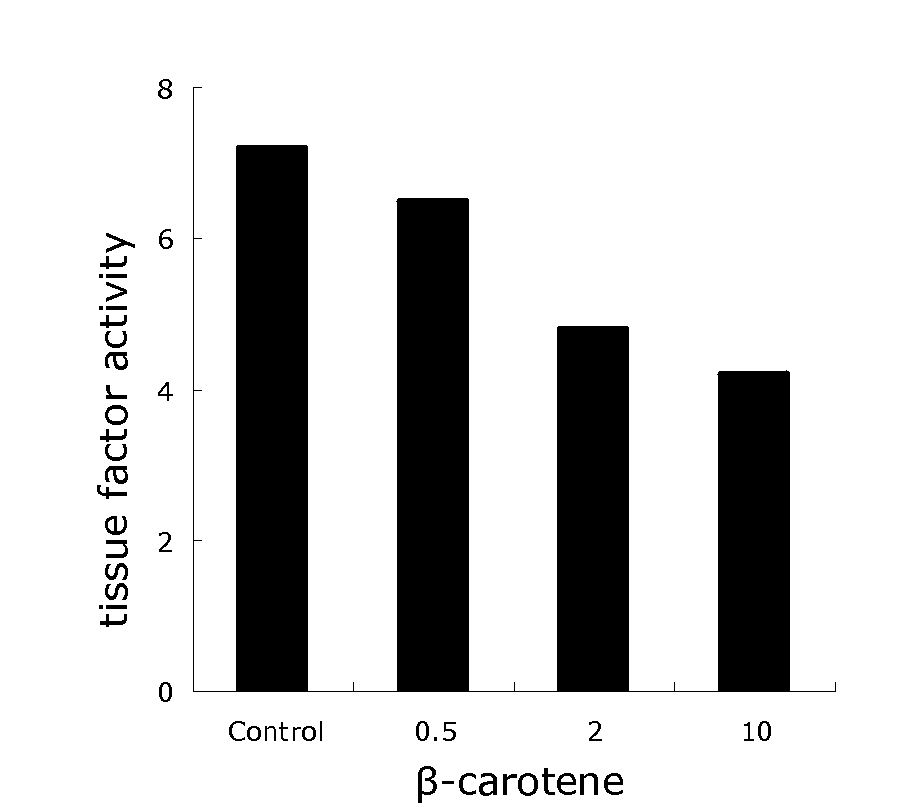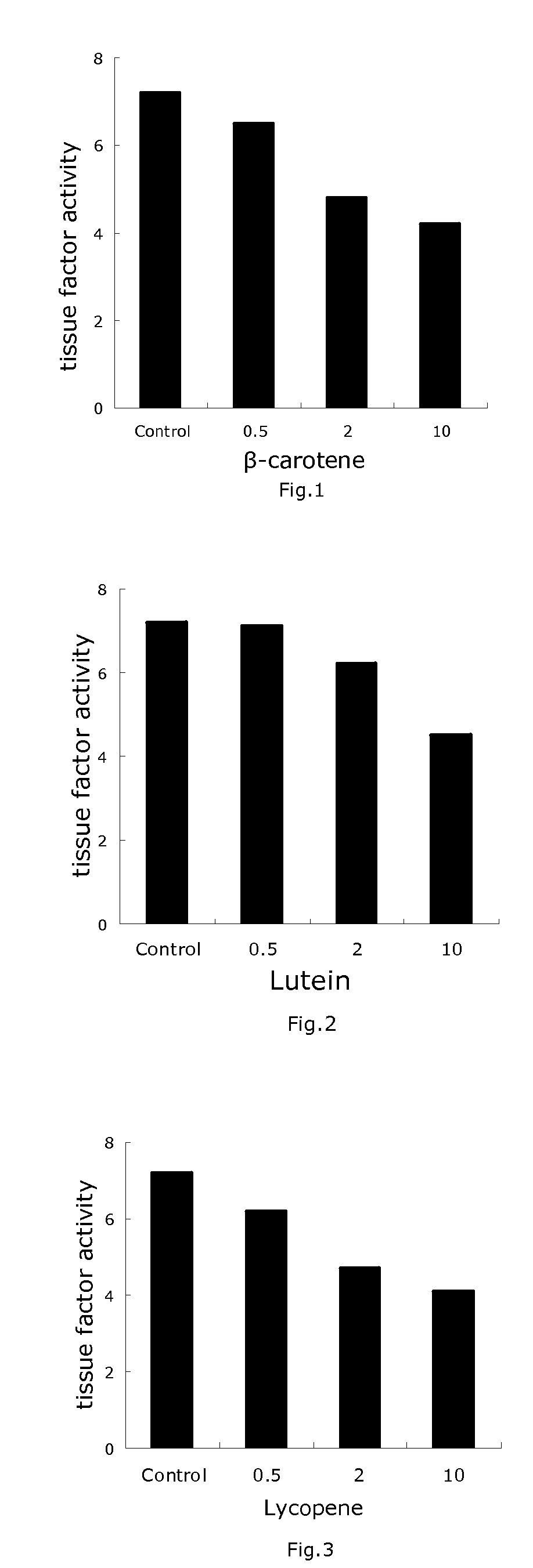Anti-oxidative content material used in drink and food manufacturing method
a technology of anti-oxidative content and food manufacturing method, which is applied in the field of food or drink, can solve the problems that anti-oxidation cannot achieve optimal anti-aging, anti-cancer, anti-heart disease, vision-enhancing effects, etc., and achieve the maximum benefit and best results
- Summary
- Abstract
- Description
- Claims
- Application Information
AI Technical Summary
Benefits of technology
Problems solved by technology
Method used
Image
Examples
example 1
[0044]Subjects were 23 healthy and non-smoking males aged from 27 to 40. During the study, the subjects ate normal diets but abstained from vegetables containing high units of carotenoids. After a 2 week depletion period, they drank daily 330 ml tomato juice with 40 mg lycopene (weeks 3 and 4), 330 ml carrot juice with 22.3 mg β-carotene and 15.7 mg α-carotene (weeks 5 and 6), and 10 g dried spinach powder (in water or milk) with 11.3 mg lutein (weeks 7 and 8).
[0045]In the course of the study, blood was collected weekly. The “COMET” assay was used to detect DNA damage in peripheral blood lymphocytes. The supplementation of the diet with tomato, carrot, or spinach products resulted in a significant decrease in endogenous levels of strand breaks in lymphocyte DNA. Oxidative base damage was significantly reduced during the carrot juice intervention. These findings support the hypothesis that carotenoid containing plant products exert a cancer-protective effect via a decrease in oxidati...
example 2
[0046]A randomized, double-blind, placebo-controlled interventional study was conducted. 37 healthy, nonsmoking females whose post-menopausal ages were between 50 and 70 years were assigned to one of five groups randomly and were instructed to consume a daily dose of mixed carotenoids (β-carotene, lycopene, and lutein; 4 mg each), 12 mg of a single carotenoid (β-carotene, lycopene, or lutein), or placebo for 56 days.
[0047]Plasma carotenoid concentrations were analyzed by using HPLC, and lymphocyte DNA damage was measured by using a single-cell gel electrophoresis (comet) assay.
Results: At day 57, all carotenoid-supplemented groups showed significantly lower endogenous DNA damage than at baseline (P<0.01), whereas the placebo group did not show any significant change. Significantly less (P<0.05) endogenous DNA damage was found as early as day 15 in the mixed carotenoid (P<0.01) group.
[0048]Conclusions: The results indicate that carotenoid supplementation decreases DNA damage and that...
example 3
[0049]Standard diet was given to 20 healthy women with average age of 25.2. Subjects were instructed to follow a standardized diet for 1 week, followed by 3 weeks consumption of the same diet enriched with small amounts of different tomato products providing as a mean 8 mg lycopene, 0.5 mg β-carotene and 11 mg vitamin C per day. Plasma and lymphocyte concentrations of carotenoids, vitamin C were analysed.
Results: Dietary intervention with tomato products increased lycopene concentration both in plasma and lymphocytes. Vitamin C concentrations increased by 35% in plasma (P<0.05) and by 230% in lymphocytes (P<0.005).
Conclusion: Tomato products are not only good sources of lycopene but also sources of bioavailable vitamin C. A Regular intake of small amounts of tomato products can increase cell protection from DNA damage induced by oxidant species. This effect may originate from the synergism of different antioxidants present in tomatoes. (Riso P et al., Eur J Clin Nutr. 2004 October;5...
PUM
| Property | Measurement | Unit |
|---|---|---|
| Temperature | aaaaa | aaaaa |
| Temperature | aaaaa | aaaaa |
| Mass | aaaaa | aaaaa |
Abstract
Description
Claims
Application Information
 Login to View More
Login to View More - R&D
- Intellectual Property
- Life Sciences
- Materials
- Tech Scout
- Unparalleled Data Quality
- Higher Quality Content
- 60% Fewer Hallucinations
Browse by: Latest US Patents, China's latest patents, Technical Efficacy Thesaurus, Application Domain, Technology Topic, Popular Technical Reports.
© 2025 PatSnap. All rights reserved.Legal|Privacy policy|Modern Slavery Act Transparency Statement|Sitemap|About US| Contact US: help@patsnap.com



